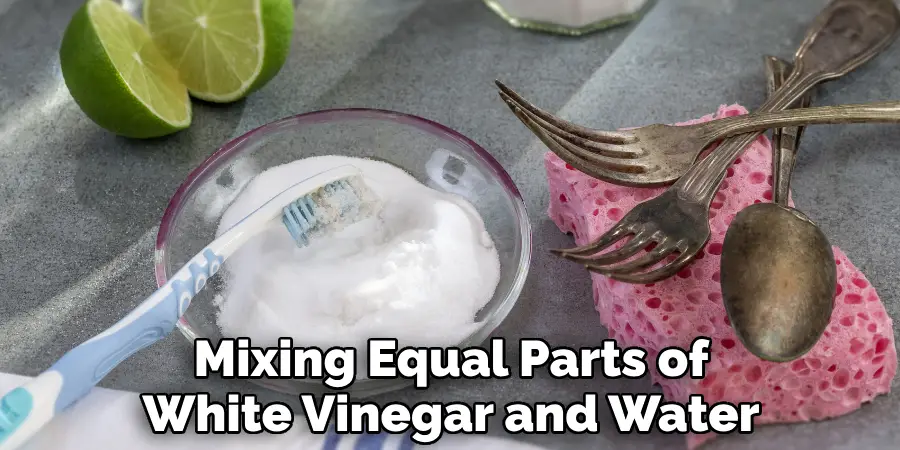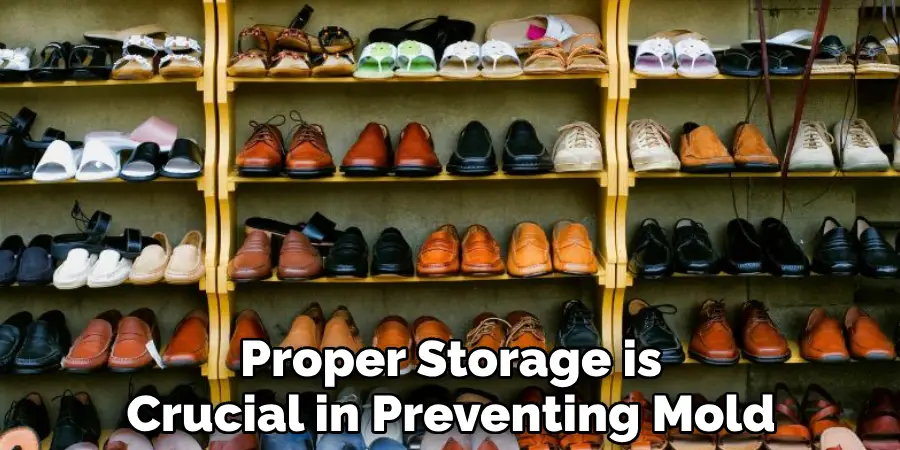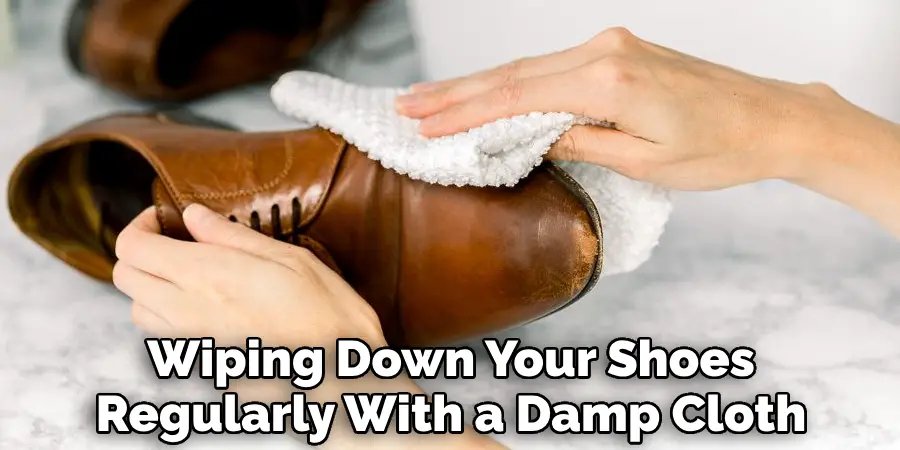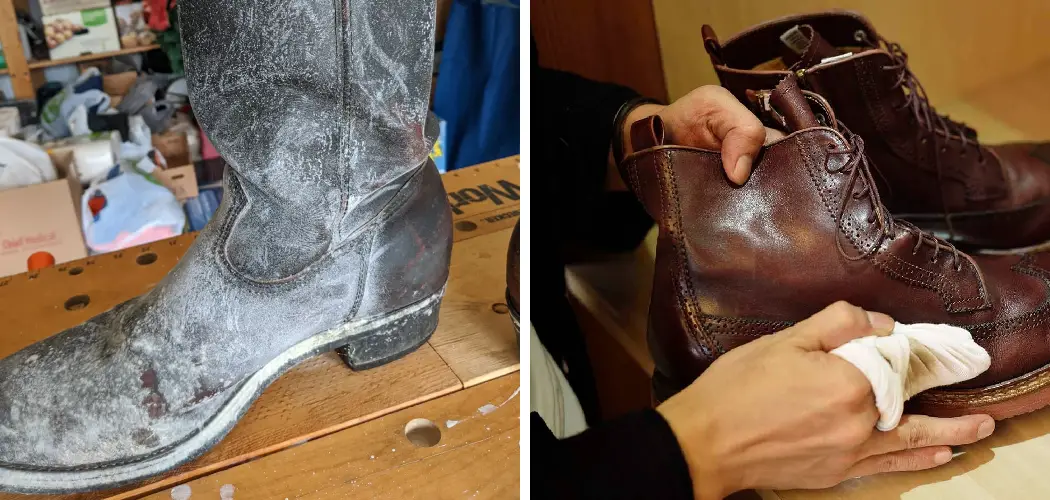Discovering mold growth on your favorite shoes can be disheartening, but fear not – restoring them to their former glory is entirely possible. Mold not only damages the appearance of shoes but can also lead to health issues. Whether it’s leather, suede, canvas, or synthetic material, effective mold removal requires a combination of thorough cleaning and careful handling.

In this article, we delve into the steps of how to remove mold from shoes, exploring various cleaning methods, preventative measures, and tips to ensure your footwear stays mold-free. By mastering the art of mold removal, you’ll not only salvage your shoes but also extend their lifespan and maintain a healthy footwear collection.
The Hazards of Mold on Shoes
Mold on shoes is often overlooked, but it can cause significant health problems for those exposed to the spores over time. Mold may not be visible until an infestation has occurred, and by then, it will be much more difficult to remove. It’s important to act quickly when you notice mold growing on shoes in order to prevent further spread of the infection. In addition to causing health concerns, mold can damage the material of your shoes, reducing their quality and life expectancy. Although there are a number of methods available to remove mold from shoes, some may be more effective than others.
The best way to remove mold from shoes is by cleaning the affected area with a mixture of bleach and water. This solution can effectively kill off any spores present on the shoe’s surface. Once the solution has been applied, allow it to sit for several minutes before wiping it off with a damp cloth. Afterward, the shoes should be dried thoroughly in order to prevent any mold spores from taking root again.
Importance of Timely Mold Removal
Mold on shoes can be an unpleasant problem, and if not removed in a timely manner, it can quickly become a bigger issue. Besides damaging the shoe material itself, mold spores may cause allergic reactions or other health issues when they come into contact with skin. Therefore, it is important to clean mold off of shoes as soon as possible.

There are several methods to clean mold off shoes, and all of them will provide the same desired outcome. It is important to understand which method may be most suitable for your particular type of shoe so that you can ensure the best results with minimal effort. With a few simple steps, you can easily remove mold from shoes and prevent it from coming back again in the future.
To begin cleaning, it is important to select the right cleaning materials. Depending on the type of shoes, some cleaners may be gentler than others. For example, if you have leather or suede shoes, then a mild soap and water solution would be most suitable. Alternatively, for cloth or canvas shoes, an all-purpose cleaner may do the trick. Once you have selected the right cleaner for the job, it is time to apply it.
10 Steps How to Remove Mold from Shoes
1. Assess the Extent of Mold Growth:
Begin by closely inspecting your shoes to gauge the extent of mold growth. Is the mold confined to the surface or has it permeated deeper layers? This assessment will inform the intensity of your cleaning efforts.
2. Choose a Well-Ventilated Area:
Mold removal releases mold spores into the air, which can be harmful if inhaled. Opt for a well-ventilated area to conduct your cleaning process. Additionally, consider wearing protective gear such as gloves and a mask to minimize your exposure to these airborne particles.
3. Remove Excess Mold:
Using a soft-bristle brush or cloth, gently remove any loose mold from the surface of your shoes. Employing a light touch will help prevent the further spread of mold spores during the cleaning process.
4. Clean with a Vinegar Solution:
Prepare a solution by mixing equal parts of white vinegar and water. Dampen a clean cloth with this solution and carefully wipe down the affected areas. The acidity of vinegar serves as a natural fungicide, effectively breaking down and eliminating mold. However, take care not to oversaturate the material, as excessive moisture could lead to damage.

5. Scrub with a Baking Soda Paste:
Stubborn mold stains might require a bit more effort. Create a paste by blending baking soda and water, then apply it to the mold-affected areas. Gently scrub the paste using a soft brush or cloth. Baking soda’s mild abrasiveness assists in dislodging the mold without harming the material.
6. Use a Commercial Mold Cleaner (If Necessary):
If the mold growth proves tenacious, consider resorting to a commercial mold cleaner that’s appropriate for your shoe material. Adhere to the manufacturer’s guidelines, and always perform a patch test on an inconspicuous area to prevent unintended damage.
7. Dry Thoroughly:
Once the cleaning process is complete, ensure your shoes are fully dry before storing them. Mold thrives in damp conditions, so providing adequate time for thorough drying is essential.
8. Apply a Preventative Treatment:
To deter future mold growth, contemplate using a preventative treatment, such as an anti-fungal spray or a blend of water and tea tree oil. A light spritz on the inner and outer surfaces of your shoes before storage can discourage mold from returning.
9. Store Shoes Properly:
Proper storage is crucial in preventing mold reoccurrence. Opt for a cool, dry environment that discourages moisture accumulation. Utilize shoe trees or crumpled paper to help maintain the shoe’s shape and absorb excess humidity.

10. Regularly Inspect and Maintain:
Vigilance is key to preventing mold from resurfacing. Regularly inspect your shoes for any signs of dampness or mold growth. Should you detect any issues, address them promptly and adhere to a routine of regular cleaning and appropriate storage practices.
Things to Consider When Removing Mold from Shoes
It’s important to take into consideration a few things when attempting to remove mold from shoes. First, it’s essential that you determine what type of material your shoe is made out of so that you can use an appropriate cleaning agent. Additionally, it’s recommended that you wear gloves and a mask while cleaning the area as mold spores can be hazardous to breathe in. Finally, it’s a good idea to keep any shoe cleaning supplies away from children and pets to avoid the risk of them coming into contact with hazardous chemicals.
Once you have taken all the necessary precautions, you can begin your mold removal process. Depending on what material your shoes are made of, a combination of warm water and soap or bleach may do the trick. If using bleach, be sure to dilute it with water first and only use on non-porous surfaces.
Some Common Mistakes When Removing Mold from Shoes
It is important to remember that mold removal from shoes is an intricate process and should never be rushed. It is easy for mistakes to occur during the cleaning process, so it’s essential to take your time throughout each step. Some common mistakes when removing mold from shoes include:
- Not using the right cleaning supplies: When attempting to remove mold from shoes, make sure you have the right cleaning supplies. Detergents that are too harsh can damage or discolor the material of your shoes, while bleach solutions may also weaken the fabric and leave behind a nasty odor.
- Not Drying Them Properly: Once you’ve completed the mold removal process, it is vital to ensure your shoes are completely dry. Not doing so can lead to your shoes becoming moldy again. Additionally, make sure to leave the shoes out in a well-ventilated area with plenty of sunshine and air circulation.
- Not Keeping Shoes Clean: To avoid having to repeat the process of removing mold from shoes, it is wise to take preventive measures by keeping them clean. This means wiping down your shoes regularly with a damp cloth and cleaning out the insides with an old toothbrush.

By avoiding these common mistakes, you can safely remove mold from shoes without damaging them or having to repeat the process. Additionally, remember that prevention is key when it comes to avoiding future cases of mold buildup on your shoes. Taking care of them by keeping them clean and dry will ensure they last longer and look better.
Conclusion
Overall, removing mold from shoes is a relatively simple process. Depending on the material of your shoes, you can use either soap and water or a bleach solution to remove most surface mold. If that doesn’t work, then you may need to replace the shoe entirely or take it to a professional shoe restorer for more heavy-duty cleaning and repairs.
Whatever method you choose, be sure to use protective gear such as gloves and safety glasses and always work in a well-ventilated area. Lastly, remember to never let moldy shoes sit around and fester – so don’t forget: prevention is key! With the right information about how to remove mold from shoes, now everyone can enjoy their favorite looks without worrying about potential damage. So don’t hesitate and begin mold remediation today – your feet will thank you!

